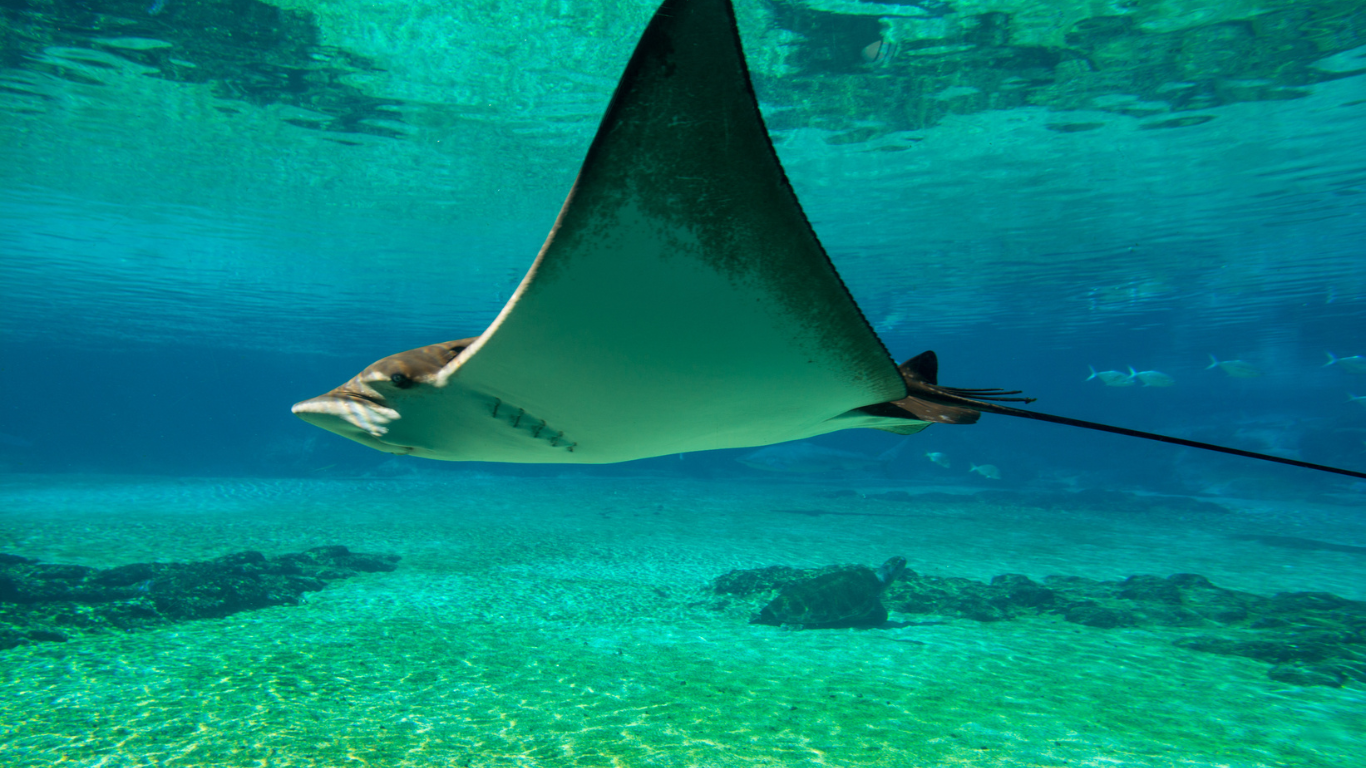Freshwater Stingray for Sale: Owning These Unique Aquatic Pets

Are you fascinated by the idea of owning a freshwater stingray? If you’ve been searching for a “freshwater stingray for sale,” you’re not alone—these captivating creatures have surged in popularity among aquarium enthusiasts. Known for their graceful movements, striking patterns, and interactive nature, freshwater stingrays offer a one-of-a-kind pet experience. In this comprehensive 3000-3500-word guide, we’ll dive deep into everything you need to know about finding a freshwater stingray for sale. From their origins and care requirements to where to buy them and what to consider before purchasing, this blog post is crafted in an informational tone to educate readers eager to explore this exotic hobby. As of April 3, 2025, let’s swim into the world of freshwater stingrays and uncover what makes them so special.
What Are Freshwater Stingrays?
Freshwater stingrays are a group of cartilaginous fish belonging to the family Potamotrygonidae, native to river systems in South America, Southeast Asia, Africa, and Australia. Unlike their marine cousins, these stingrays thrive in freshwater environments, such as the Amazon River and its tributaries. They’re relatives of sharks and skates, sporting flat, disc-shaped bodies and whip-like tails equipped with a venomous barb used for defense. Their stunning patterns—like the black-and-white spots of the Black Diamond or the marbled hues of the Motoro—make them a visual standout in any aquarium. Ranging from 7 to 18 inches in disc width (sometimes larger), they’re intelligent, interactive, and surprisingly trainable, often learning to hand-feed. As exotic pets go, freshwater stingrays are a unique blend of beauty and personality, drawing hobbyists to seek them out for sale.
Why Choose a Freshwater Stingray as a Pet?
So, why are freshwater stingrays for sale so appealing? First, their aesthetic allure is unmatched—imagine a living piece of art gliding across your tank. Their patterns, from galaxy-like speckles to pearl-ringed designs, turn an aquarium into a showpiece. Second, they’re engaging companions. These rays can recognize their owners and respond to feeding cues, adding an interactive layer to pet ownership. Third, they offer a challenge—caring for them hones your skills as an aquarist, rewarding dedication with a thriving, long-lived pet (up to 15 years with proper care). Finally, they’re a conversation starter. Few pets spark curiosity like a stingray, making them a bold choice for enthusiasts wanting something beyond typical fish. If you’re drawn to the unusual and committed to their needs, a freshwater stingray could be your next aquatic adventure.
Popular Types of Freshwater Stingrays for Sale
When browsing for a freshwater stingray for sale, you’ll encounter a variety of species and hybrids, each with distinct looks and traits. The Black Diamond Stingray (Potamotrygon leopoldi) is a fan favorite, prized for its jet-black base dotted with crisp white spots—think of it as the “king” of stingrays, often fetching premium prices. The Motoro Stingray (Potamotrygon motoro) is a classic beginner’s pick, with a hardy nature and brown body accented by orange-yellow spots. Pearl Stingrays (Potamotrygon sp.) shimmer with golden-brown tones and black-ringed “pearls,” offering a softer elegance. Galaxy P14 Stingrays dazzle with tiny white speckles on a dark base, while hybrids like the Albino Cinnamon Red blend rare colors for a standout effect. Each type varies in size, temperament, and care needs, so research your options to match your setup and experience level.
Where to Find Freshwater Stingrays for Sale
Ready to find a freshwater stingray for sale? Start with specialty aquarium stores—places like Predatory Fins (predatoryfins.com) and Center for Stingray Biology (stingraybiology.com) breed and sell high-quality rays, from Black Diamonds to designer hybrids. Online retailers like Super BD Stingray (superbdstingray.com) and Exotic Aquatic Pet Store (exoticaquaticpetstore.com) offer a range of species with shipping options, often including health guarantees. eBay occasionally lists stingrays from individual sellers, though vetting authenticity is key. Local fish stores in legal states might carry them—call ahead to check stock. Forums like MonsterFishKeepers.com or social media marketplaces (e.g., Gumtree in Australia) connect you with breeders too. Always buy from reputable sources with clear policies on live arrival and DOA replacements to ensure a healthy stingray reaches your tank.
Understanding the Cost of Freshwater Stingrays
The price tag on a freshwater stingray for sale can vary widely. A basic Motoro pup might start at $300-$400, while a coveted Black Diamond can soar to $1,500 or more, especially for mature or captive-bred specimens. Designer hybrids, like Albino Pearls, range from $495-$850, depending on rarity and lineage. Size matters too—juveniles (7-10 inches) are cheaper than adults (12-18 inches). Shipping adds $50-$100 via UPS Next Day Air, and some sellers bundle deals (e.g., 2-for-$750). Factor in tank setup costs—$500-$1,000 for a 100-200 gallon system—and ongoing expenses like food ($20-$50/month) and water maintenance. Prices fluctuate with demand, location, and breeder reputation, so shop around and budget for both the ray and its lifelong care.
Legal Considerations Before Buying
Before snagging a freshwater stingray for sale, check the law. In the U.S., they’re illegal to own privately in 11 states: Arizona, Arkansas, California, Florida, Georgia, Hawaii, Mississippi, Nevada, Oklahoma, Texas, and Utah. Permits might be granted to zoos or research facilities, but personal ownership is off-limits. Elsewhere, like New York or Missouri, they’re fair game—still, local ordinances could apply, so call your fish and wildlife department. Internationally, countries like Australia may restrict imports or require permits (e.g., CITES for certain species). Buying from a state where they’re banned risks confiscation and fines, even if you ship across borders. Verify your stingray’s origin too—wild-caught rays might skirt regulations, while captive-bred ones are safer bets. Know your local rules to avoid legal headaches.
Tank Requirements for Freshwater Stingrays
Freshwater stingrays need space—lots of it. A single juvenile (7-10 inches) demands at least a 100-gallon tank, but as they grow to 12-18 inches (or more), 150-200 gallons is ideal. Active species like Black Diamonds thrive in setups 1.5 times their adult width (e.g., 24 inches) and 4-5 times their length—think 4×8-foot custom tanks. Depth matters less than floor space; 18-24 inches high works fine. Substrate should be fine sand or bare-bottom—gravel risks injury. Add a robust filter (e.g., canister or wet/dry) to handle their hefty bio-load, plus a heater for 75-82°F. Decor’s minimal—rays love open swimming areas, though smooth rocks or driftwood can mimic their river habitats. Bigger is always better; cramped rays stress out fast.
Feeding Your Freshwater Stingray
Feeding a freshwater stingray is a carnivorous affair. In the wild, they munch fish and crustaceans; in your tank, they’ll take live or frozen bloodworms, shrimp, earthworms, and fish fillets (like tilapia). Captive-bred rays often accept sinking pellets—try Aqueon Bottom Feeder Tablets or Hikari Carnivore Pellets—easing the transition from live food. Juveniles need 1-2 small meals daily; adults can drop to once a day or every other day, depending on size. Hand-feeding is a perk—use tweezers to offer shrimp and watch them glide over. Avoid overfeeding; uneaten food spikes ammonia, a stingray’s kryptonite. Variety keeps them healthy—mix proteins and monitor their appetite to gauge portions. A well-fed ray is an active, vibrant one.
Water Quality and Maintenance Tips
Water quality is make-or-break for a freshwater stingray. They’re sensitive to ammonia, nitrite, and nitrate—levels must stay at 0, 0, and under 10 ppm, respectively. Aim for a pH of 6.5-7.5 and alkalinity of 18-70 ppm, with a steady 75-82°F temperature. Their waste output is high, so a beefy biological filter (think Fluval FX6) and 25-50% weekly water changes are non-negotiable—use an Aqueon Water Changer for ease. RO/DI water with trace elements can stabilize conditions; skip salt unless treating stress or nitrites (and check tankmate tolerance). Test weekly with an API Freshwater Master Kit, and dechlorinate tap water with Aqueon Water Conditioner. Pristine water equals happy rays—slacking here risks their health fast.
Health and Common Issues to Watch For
Freshwater stingrays are hardy when cared for right, but issues can crop up. Watch for appetite loss or lethargy—early signs of stress or poor water quality. Skin lesions or cloudy patches might signal bacterial infections, often from dirty tanks; treat with herbal remedies (avoid copper-based meds—they’re toxic to rays). Parasites like flukes can hitchhike from wild-caught stock—look for scratching or erratic swimming and quarantine new arrivals. Barb injuries (self-inflicted or from tankmates) heal if water’s clean, but monitor for infection. Overfeeding bloats them; underfeeding thins their bodies. Regular checkups—robust shape, clear eyes, steady breathing—keep them thriving. A vet with fish experience is gold if trouble hits; prevention’s your best bet.
Pros and Cons of Owning a Freshwater Stingray
Weighing a freshwater stingray for sale? Here’s the rundown. Pros: they’re stunning—unique patterns and graceful moves dazzle any tank. They’re interactive—hand-feeding builds a bond. Longevity’s a plus; 10-15 years with care beats many fish. They’re a skill flex—mastering their needs boosts your aquarist cred. Cons: they’re pricey—rays and setups hit wallets hard. Space is a beast—200-gallon tanks aren’t cheap or small. Maintenance is intense—water quality demands vigilance. Legal hoops and sting risks (though rare) add complexity. They’re not for beginners—experience matters. If you’re all-in on the challenge, the rewards are unmatched; if not, simpler fish might suit better.
How to Choose a Healthy Stingray
Picking a freshwater stingray for sale requires a keen eye. Look for activity—healthy rays glide smoothly, not listlessly. Check body condition—no dips near the eyes or tail, just a plump, even disc. Eyes should be clear, not cloudy; skin smooth, free of sores or discoloration. Ask about feeding—rays eating well (especially pellets) adjust faster. Captive-bred beats wild-caught—less stress, fewer parasites. Verify age and size—4-9-month-olds (7-10 inches) are ideal starters. Request a video or in-person peek; reputable sellers like Predatory Fins oblige. Confirm shipping prep—24-48 hours off food prevents waste in transit. A thriving ray now means fewer headaches later—choose wisely.
Frequently Asked Questions About Freshwater Stingrays for Sale
Got questions about freshwater stingrays for sale? Here’s the scoop.
How much do they cost?
$300-$1,500, depending on type and size.
Are they legal where I live?
Check your state—11 U.S. states ban them; others don’t.
What size tank do I need?
100 gallons minimum, 200+ for adults.
What do they eat?
Carnivorous—shrimp, worms, pellets.
Are they hard to care for?
Yes—water quality and space are tough but doable with effort.
Can they sting me?
Yes, but only if provoked—handle with care.
How long do they live?
Up to 15 years with top care.
Where do I buy one?
Specialty sites, local stores, or breeders—vet them well.
These cover the basics buzzing around in 2025—dive in informed!
Conclusion: Is a Freshwater Stingray Right for You?
A freshwater stingray for sale isn’t just a purchase—it’s a commitment to an extraordinary pet. Their beauty, from Black Diamond spots to Motoro swirls, and their interactive charm make them aquarium stars. But they demand space, pristine water, and a budget to match—$300-$1,500 for the ray, plus hundreds more for gear. Legal checks and care know-how are musts; they’re not beginner fish. As of April 3, 2025, the market’s ripe with options—Predatory Fins, Stingray Biology, and more offer healthy stock. If you’re ready for the challenge, a stingray’s grace and personality are unmatched rewards. Curious? Start your search, size up your setup, and see if these river gems fit your life.



